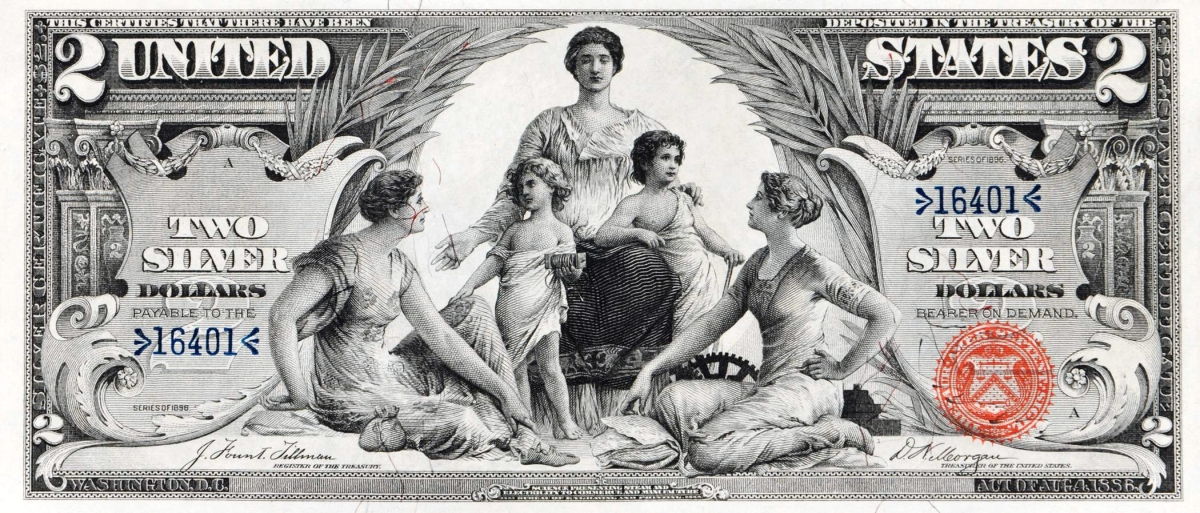
Kyle Johnson started Skinner’s coins and currency department in 2016 after having been a specialist in the Discovery department since joining the firm in 2013. He has handled great collections of early gold, New Hampshire banknotes and Massachusetts silver coinage, and says he is excited by the prospect of growing the department. Skinner will host an online rare coins and paper money sale, February 8-16, with many examples that are new to the market.
How did you become interested in this category?
When I was 8, I discovered a 1918 Lincoln wheat cent in circulation. It immediately stuck out, not because it looked different, but because it was so old! Finding something from almost 80 years prior was a big deal to me, and associating that date with a historical event, the end of World War I, jump-started my interest in numismatics.
What factors make coins or currency most interesting and valuable to collectors?
A myriad of reasons. They might appreciate the piece for its artistic and aesthetic merits. Not only does money convey denomination and worth, but also incorporates allegorical symbols, portraits of rulers and anything else that might represent a nation at any one time. Many coins show artistic styles that were popular at the time of the coin’s creation. Those who appreciate French Art Nouveau paintings and sculptures in a museum might also appreciate French coins from the late Nineteenth and early Twentieth Century. Another factor is the historical connection between a collector and a piece. The collector may take an interest in local or regional history, and may be especially fond of bank notes from the region or medals from associations they belong to.
What is the most valuable coin or piece of currency you have ever handled at auction?
While the department is still relatively new, we’ve seen our fair share of fun and rare items. Our last sale in August included an 1843 Republic of Texas 12½-cent exchequer note, one of only a handful to survive. This note was found folded up in a group of common Confederate and obsolete notes, probably totaling no more than $50 in value. While cataloging the group, the discovery was made and research ensued. This piece wasn’t only incredibly rare. It was signed by Sam Houston himself and was the last paper money of the Republic of Texas prior to statehood. After spirited bidding from Texan collectors during Hurricane Harvey, the note sold for $39,975. This sale was significantly higher than the previous example to cross the auction block, which sold in 2011 for around $12,000.

This $2 “Educational” silver certificate, 1896, in gem uncirculated condition, features excellent color
and terrific eye appeal, with a serial number of 16,401. It is estimated $6/8,000.
Millennials seem less hung up about possession. And there are now Bitcoin auctions as well an emerging cryptocurrency art and collectibles market. Any bearing on the collecting category?
While I am skeptical of cryptocurrencies as a whole, I can appreciate what they’re trying to do. By decentralizing a monetary system, it allows items to be traded in a currency that is universal. A downside to this is the constant need to adjust pricing based on both the actual market and market speculation due to the volatility of cryptocurrencies. Most recently we’ve seen Bitcoin go from around $1,000 last winter up to $19,000. Regardless of this, I think cryptocurrencies attract a younger generation, those more inclined to be tech-savvy, generations that have shied away from “things.” With art and collectible markets that are inclusive of cryptocurrencies as a form of payment, they’re reaching a broader audience than before. This exposure is sure to generate new clients that will turn into collectors. Dealers in fine art, decorative art, coins and collectibles in general have been able to adapt to changing times in the past, which makes me hopeful for the future!
Advice for someone who has acquired a collection as part of an inheritance?
Dive into it! Sure, it can seem overwhelming, but catalog/inventory everything! Use Google, PCGS, NGC, these are all free resources with loads of information. PCGS includes comments from various authors on American coins that are informative. Not only do they provide facts in terms of mintage, weight, diameter, metal composition, and engraver, but can contextualize a coin by providing historic details regarding why an issue is rare or valuable.
It is said that the bare-breasted “Electricity” on a $5 bill reportedly offended women in Boston’s high society, causing it to be discontinued. How valuable is this?
While this was a factor to the demise of the “Educational” series, it was not the only one. Previous silver certificate designs were more functional and utilitarian, featuring portrait vignettes and complex anti-counterfeiting lathework. These notes, while interesting, paled in comparison. In the early 1890s, the Treasury Department and the Bureau of Engraving and Printing employed established muralists Will H. Low, E.H. Blashfield and Walter Shirlaw to completely redesign the $1, $2 and $5 notes. While the “indelicate figures” featured on these notes were significant cause for complaints, there were also issues with ink smudging, counterfeiting and difficulty in discerning denominations easily by tellers. These factors together contributed to the discontinuation of the series shortly thereafter. As for their value, “Educational” notes range anywhere from $100 past $30,000 depending on their condition. In 2011, the first sheets of each denomination were sold to the tune of $1,265,000.
-W.A. Demers




